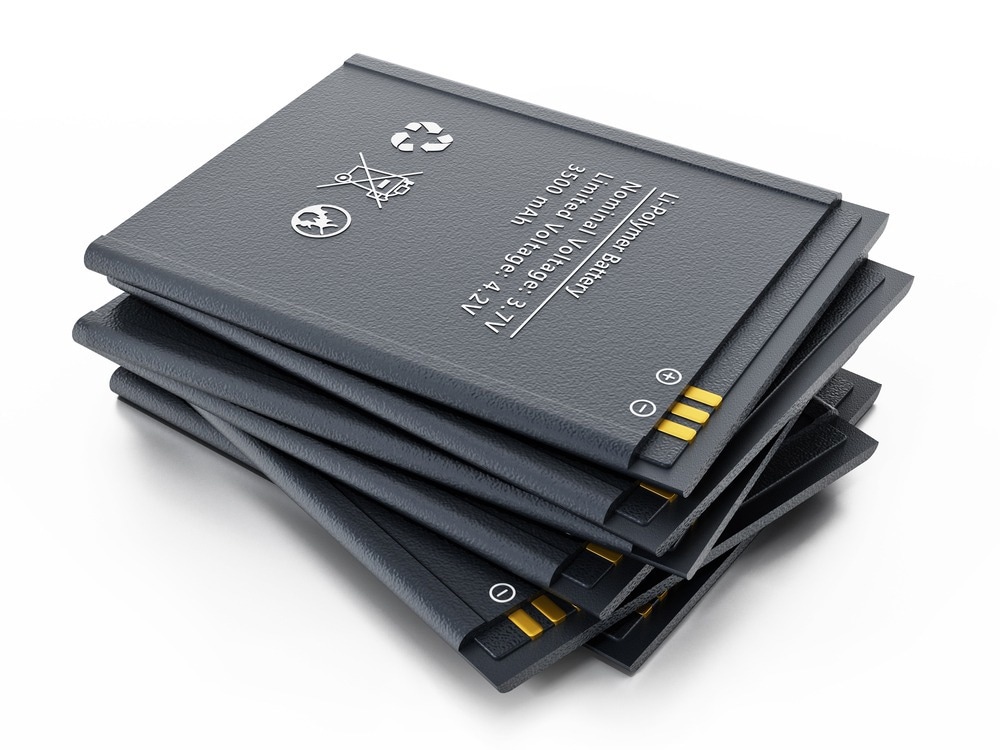Lithium-ion batteries have become prevalent in various portable electronic devices and electric vehicles. With advancements in technology, these batteries hold the potential to serve as efficient storage systems for renewable energy technologies.

Image Credit: cigdem/Shutterstock.com
A recent study published in the journal Carbon focuses on the application of high-powered laser pulses of brief duration for inducing minute defects in lithium-ion battery materials, which in turn improves battery performance.
Lithium-ion Batteries (LIBs): Why Are They Important?
The increasing demand for energy for consumer electronics and the rise of global warming has led to a growing interest in energy conversion and storage devices, such as solar cells, supercapacitors, and batteries. Energy conversion and storage are crucial technologies for addressing the current energy crisis.
Batteries, in particular, have gained a lot of interest owing to their prospective usage in portable electronics and electric vehicles. Over the past three decades, lithium-ion batteries (LIBs) have been a game-changer in the world of portable electronics, providing higher energy density and better reversible capacity compared to other rechargeable battery systems.
However, the benefits of LIBs extend far beyond just portable electronics. With advancements in energy density, they could revolutionize transportation and the storage of renewable energy.
The energy density of lithium-ion batteries is determined by several factors including the defects, materials chemistry, and microstructural characteristics of the cathode and anode materials. The choice of materials, their composition, and the presence of defects can impact the cell voltage and current capacity, ultimately affecting the energy density.
Challenges Associated with Lithium-ion Batteries (LIBs)
In the realm of Lithium-ion batteries (LIBs), there are some limitations and challenges that need to be addressed. Currently, graphite is the most commonly used anode material, but it has a limited capacity and is prone to lithium plating and short-circuiting.
On the other hand, anode materials based on silicon have a high current capacity, but they face challenges with high volume expansion and cracking during charging and discharging cycles.
Although attempts have been made to improve the performance of graphite-based anodes through various modification methods, there has not been a significant improvement in lithium diffusion rate. The large size of graphite crystals also slows down the intercalation of lithium ions.
Additionally, the formation of lithium clusters and plating can reduce current capacities. Even though laser processing of electrodes has been explored as a way to improve properties, it can also result in the creation of undesirable phases that decrease energy density.
Highlights of the Current Study
The purpose of this research was to increase the performance and current capacity of graphite anodes utilizing nanosecond pulsed laser annealing (PLA). The researchers concentrated on the formation of flaws and surface steps, as well as eliminating disorganized carbon and deactivated polyvinylidene difluoride (PVDF) binders from graphite anode interfaces and intergrain regions.
The researchers used density functional theory (DFT) calculations to evaluate the formation and migration energies of single and multiple vacancies (defects) in graphite.
The nanosecond laser annealing process was used to create vacancies in the basal planes of graphite, which served as active sites for lithium-ion trapping and detrapping during charging and discharging.
“Material defects can be a nuisance, but if you engineer them correctly you can make them an advantage,” said Jay Narayan, the corresponding author of the paper.
This technique opens the door, so to speak, for lithium ions, so it enhances the current capacity. Graphite anodes consist of steps and grooves on the surface – creating more steps is like creating more doors for lithium ions to get in and get out, which is beneficial.
Jay Narayan, Corresponding Author, Department of Materials and Engineering, North Carolina State University
Important Findings and Future Outlook
The results of this study indicate that the use of high-power nanosecond pulsed laser annealing can effectively improve the performance of graphite anodes in Lithium-ion batteries (LIBs).
The laser pulse was found to create vacancy defects and surface steps in the (0001) plane, leading to an increased concentration of mobile Li+ ions during charging and discharging. This resulted in a 20% increase in current capacity and enhanced cyclability of graphite anodes.
Additionally, the results showed a significant reduction in the formation of the solid-electrolyte interphase (SEI) after the laser treatment.
The concentration of vacancies and surface steps can be further optimized to enhance the concentration of mobile lithium-ions without promoting the formation of lithium metal and its associated safety hazards.
Pulsed laser annealing is a promising method for surface modification of graphite anodes to improve the current density, power, performance, and overall lifetime of LIBs.
Reference
Khosla, N. et al. (2023). Microstructure and defect engineering of graphite anodes by pulsed laser annealing for enhanced performance of lithium-ion batteries. Carbon. Available at: https://doi.org/10.1016/j.carbon.2023.01.009
Disclaimer: The views expressed here are those of the author expressed in their private capacity and do not necessarily represent the views of AZoM.com Limited T/A AZoNetwork the owner and operator of this website. This disclaimer forms part of the Terms and conditions of use of this website.